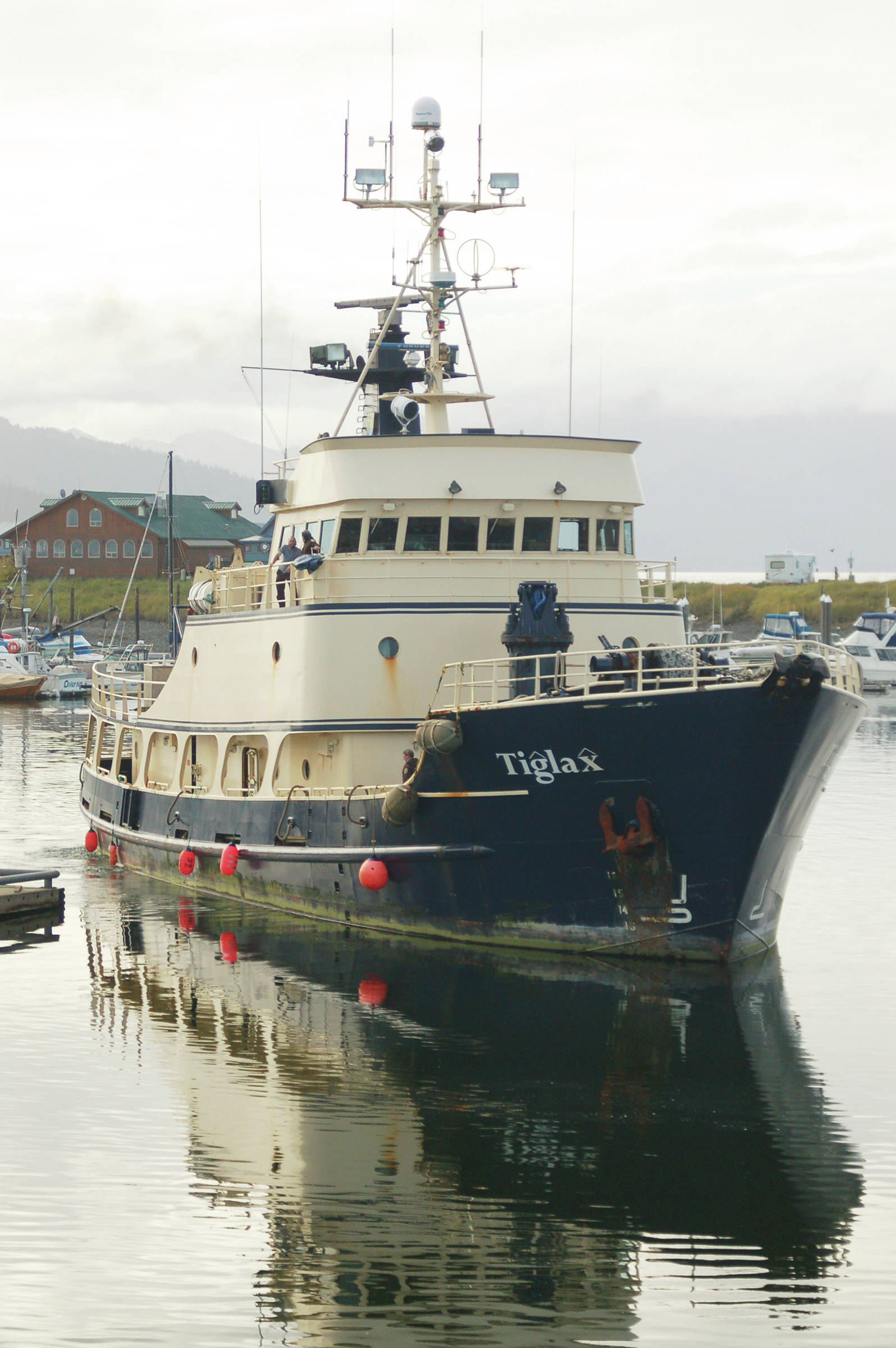We’ve probably already met, but you didn’t realize it. We’re the other national wildlife refuge headquartered on the Kenai Peninsula. If you’ve taken a Kenai Fjords cruise out of Seward, most of the islands that you saw, including the Chiswells, are part of the refuge. Ever fished out past the end of the Peninsula, beyond the Kennedy Entrance? Those nutrient-rich waters feed millions of seabirds nesting on the refuge’s Barren Islands. Closer to the Kenai Peninsula, refuge lands include Sixty Foot Rock and most of Yukon Island in Kachemak Bay.
Alaskans are fond of pulling out that map that superimposes our state on a map of the Lower 48, and our staff especially likes to do this because it illustrates our boundaries, too. Alaska Maritime National Wildlife Refuge’s 3.4 million acres stretch from the tip of the Aleutian Archipelago, across the Gulf of Alaska almost to the Canadian Border, and north to the Chuckchi Sea at Cape Lisburne. It’s the equivalent of extending from California to Georgia and up to the Dakotas. Most of the refuge units have been wildlife refuges for over a century, but they were combined and renamed Alaska Maritime under ANILCA (Alaska National Interests Lands Conservation Act).
Managing and studying lands spanning thousands of miles of Alaska’s coast is a logistical and financial challenge. We can’t be everywhere, so we intensively study eight sites that are hundreds of miles apart and visit other sites less frequently. We study seabirds, watching for changes in the marine environment. The bird species that we study each have different strategies for survival. Some, like murres, are offshore diving fish-feeders (say that three times fast), while the small gulls called kittiwakes feed on fish closer to the surface. Tiny auklets submerge in search of plankton.
Little dramas play out everywhere on cliff ledges and crevices, and you can’t help but feel a little sad at the egg that is lost to a predator, laugh at and anthropomorphize the neighbors bickering in close quarters, or cheer for the chicks that make it to fledgling. By studying what the birds bring back to their nestlings, we learn about the food web that feeds wildlife and people. The data that we collect is important to other scientists and helps fisheries managers understand current conditions of forage fish stocks.
So how do we travel across this vast refuge? A crucial part of accomplishing our mission is our ship. The 120-foot Research Vessel Tiglax (Tiglax means Eagle in Unangan/Aleut) transports most of our field biologists to their island study sites. Her crew of professional mariners supports the work of the refuge, safely supporting scientists on remote beaches in the Bering Sea.
In the spring when the Tiglax leaves the Homer harbor, she’s carrying all of the scientific equipment and supplies that our biological field camps will need for most of the summer. The biologists will get one resupply mid-season, so a lot of careful planning goes into the shopping list for each camp. Clothing and outerwear to stay warm and dry in wet and windy conditions? Check. Safety and first aid supplies? Check. Non-perishable food? Check. Cleaning supplies? Check. Toilet paper? Check. Maybe you can relate to this if you’ve been busy stocking up on essentials lately, trying to limit how many trips you make to the store.
In my 16 years working Alaska Maritime Refuge I’ve been awed by the beauty of these coastal lands, but the stunning geological formations and lovely scenery aren’t the reason for creating a national wildlife refuge. The islands and headlands are part of the refuge because they provide habitat for wildlife. That includes critical haulouts and rookeries for marine mammals and nest sites for a staggering forty million seabirds.
Public lands like the islands of Alaska Maritime provide a refuge for wildlife and people. Especially during times of stress and uncertainty, we can find solace in the many ways they can sustain our spirits. Take advantage of our lengthening days to enjoy skiing and snowshoeing, reading the stories told by wildlife tracks in the snow. As icy shores melt from Kachemak Bay to the Kenai River, keep an eye out for the early spring antics of seabirds and waterfowl. Some of our resident birds like owls and eagles are already nesting, and migratory birds are on the wing in southern latitudes. Get outside and find opportunities to watch wildlife, fish, hunt, and gather sustenance to feed your body and soul.
Thanks to our colleagues at the Kenai National Wildlife Refuge for allowing us to contribute to the Refuge Notebook. We look forward to sharing more about Alaska Maritime Refuge in future issues. Our offices are located in Homer, and most folks on the Kenai Peninsula know our visitor center as Islands and Ocean. During the summer months we offer guided walks, talks, and labs. In winter we invite you to join us for free lectures and family programs. We’re normally open year round and provide a wide range of free programs. To stay up to date on our current program schedule, follow our Facebook site or drop us a line at alaskamaritime@fws.gov and we’ll send you a monthly list of upcoming programs.
Marianne Aplin is the Visitor Services Manager for Alaska Maritime National Wildlife Refuge. Starting with this issue, the Refuge Notebook will also include occasional articles from Alaska Maritime National Wildlife Refuge. Find more Refuge Notebook articles (1999–present) at https://www.fws.gov/refuge/Kenai/community/refuge_notebook.html.



